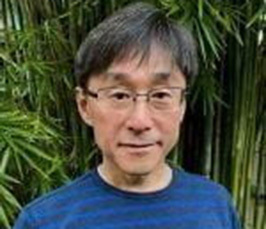Cavity Quantum Electrodynamic Control of Condensed Matter
Max Planck Quantum Matter Seminar
- Date: Dec 9, 2021
- Time: 03:00 PM - 04:00 PM (Local Time Germany)
- Speaker: Junichiro Kono
- Rice University
- Location: online via Zoom
- Host: Hope Bretscher

Recent advances in optical studies of condensed matter have led to the emergence of a variety of phenomena that have conventionally been studied in quantum optics. These studies have not only deepened our understanding of light-matter interactions but also introduced aspects of many-body effects inherent in condensed matter. This talk will describe our recent studies of Dicke cooperativity, i.e., many-body enhancement of light-matter interaction, a concept in quantum optics [1]. This enhancement has led to the realization of the ultrastrong coupling (USC) regime, where new phenomena emerge through the breakdown of the rotating wave approximation (RWA) [2]. We will first describe our observation of USC in a 2D electron gas in a high-Q THz cavity in a magnetic field [3]. The electron cyclotron resonance peak exhibited a polariton splitting with a magnitude that is proportional to the square-root of the electron density, a hallmark of Dicke cooperativity. Additionally, we obtained definitive evidence for the vacuum Bloch-Siegert shift [4], a signature of the breakdown of the RWA. The second part of this talk will present microcavity exciton polaritons in a thin film of aligned carbon nanotubes [5] embedded in a Fabry-Pérot cavity. This system exhibited cooperative USC with unusual continuous controllability over the coupling strength through polarization rotation [6]. Finally, we have shown that Dicke cooperativity also occurs in a magnetic solid in the form of matter-matter interaction [7]. Specifically, the exchange interaction of N paramagnetic Er spins with an Fe magnon field in ErFeO3 exhibited a Rabi splitting whose magnitude is proportional to N^{1/2}. These results provide a route for understanding, controlling, and predicting novel phases of condensed matter using concepts and tools available in quantum optics.
- For a review, see K. Cong et al., J. Opt. Soc. Am. B 33, C80 (2016).
- For a review, see P. Forn-Díaz et al., Rev. Mod. Phys. 91, 025005 (2019).
- Q. Zhang et al., Nat. Phys. 12, 1005 (2016).
- X. Li et al., Nat. Photon. 12, 324 (2018).
- X. He et al., Nat. Nanotechnol. 11, 633 (2016).
- W. Gao et al., Nat. Photon. 12, 362 (2018).
- X. Li et al., Science 361, 794 (2018).